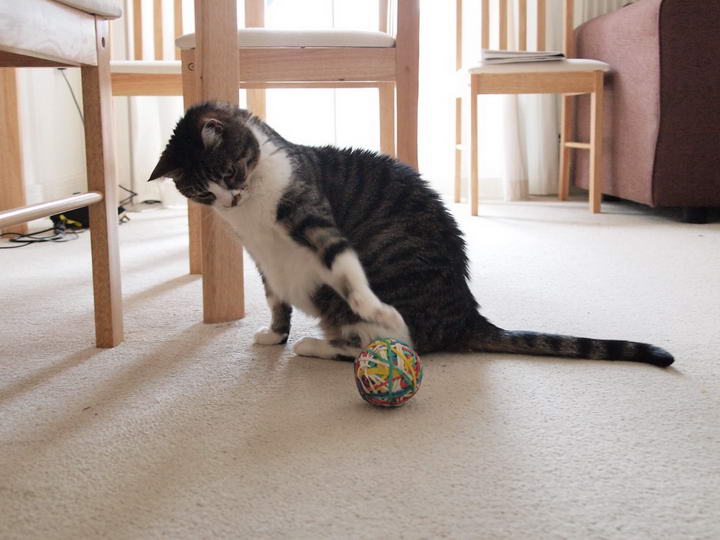Training a cat takes some time and effort. Here are some simple and useful commands and tricks.

Teaching the "Sit" Command
Want to teach your cat to sit? Start by placing your cat on a table or another raised surface. Hold a treat above its head, say its name, and then say "sit." As your cat follows the treat with its eyes, its rear will naturally lower into a sitting position.
As soon as it sits, click a clicker and say "sit," then give it the treat. If it doesn't sit on its own, gently press down on its rear while holding the treat above its head, repeating "sit." When it finally sits, click and reward it.
Soon, your cat will associate the command "sit" with getting a treat, and you won't need the clicker anymore. A simple "sit" will be enough to get your cat to do just that.

Teaching the "Come" Command
Getting your cat into a carrier for a vet visit can be a struggle. Teaching it to come when called can make your life so much easier, especially if your cat is prone to hiding or running off. It’s also a great command for safety—if your cat sneaks out of the house, you can call it back without a chase.
Start by using a clicker to attract your cat to the feeding area. Say "come" and click when it arrives. When it does, give it a treat and praise it.
Continue practicing the "come" command, but change the training location to other parts of your house. Eventually, your cat will come to you when you call "come," without needing a clicker, as it learns to associate your voice with a treat.
Teaching the "Stay" Command
Teaching your cat to stay can be a bit more challenging. Begin by placing a treat about ten feet away on the floor. When your cat moves towards it, hold out your hand to stop it and say "stay." If it stops, click and reward it. If it keeps going, repeat the command, extending your hand to signal it to stop. Only reward when it stays put.
Repeat this process until your cat understands that "stay" means it should hold its position.
Training a command can take a day or two, or even up to a week, so be patient. The key is to keep training sessions fun for both you and your cat to maintain interest and motivation.

Comments
Post a Comment